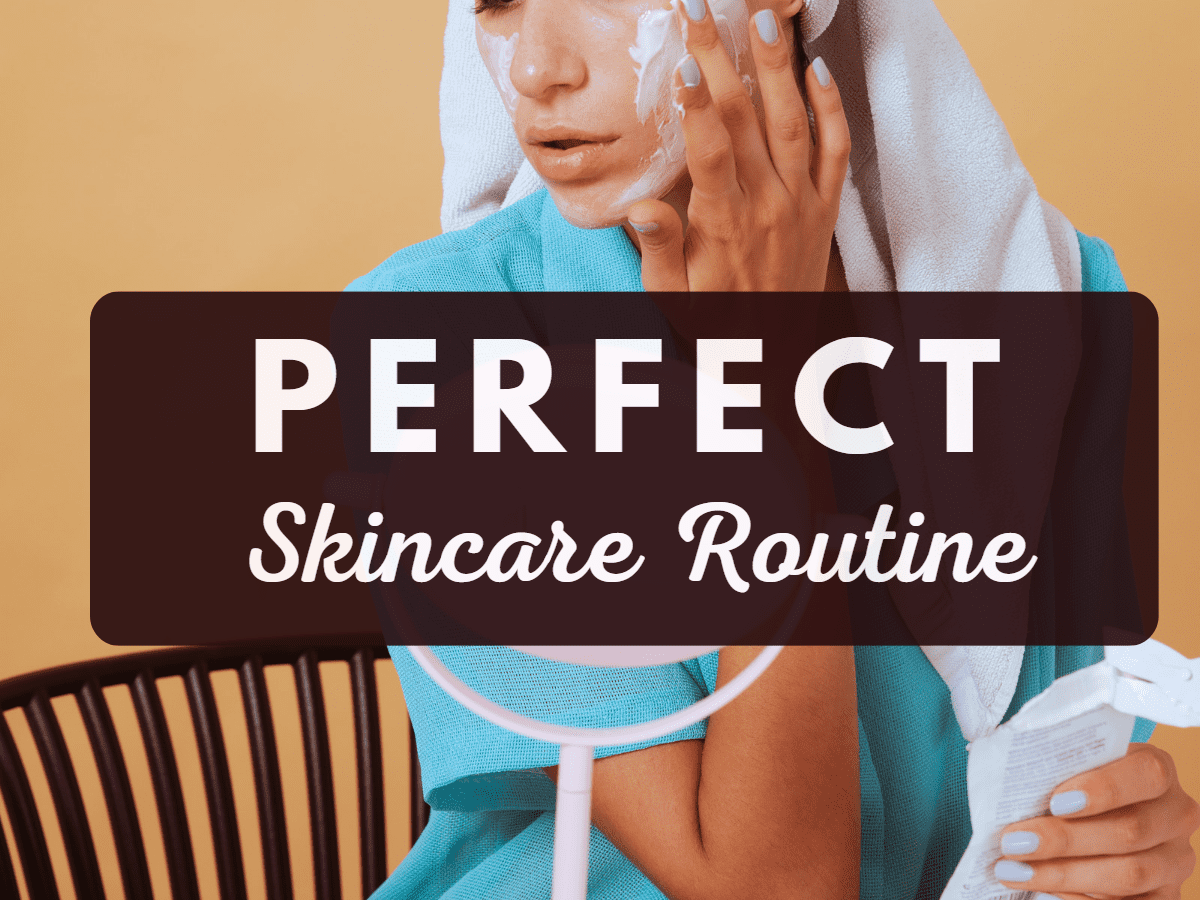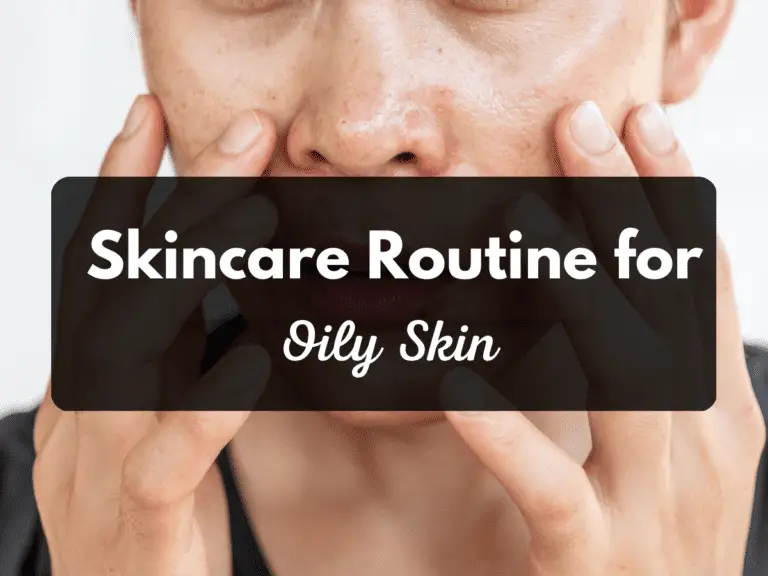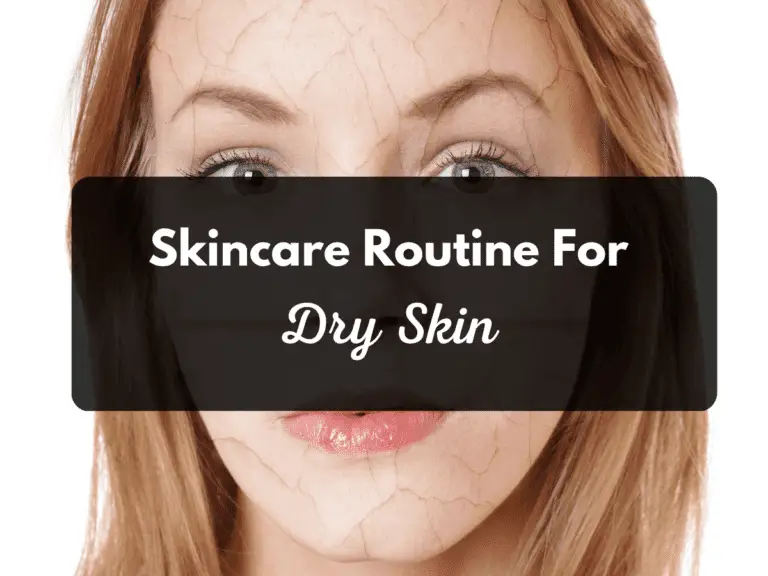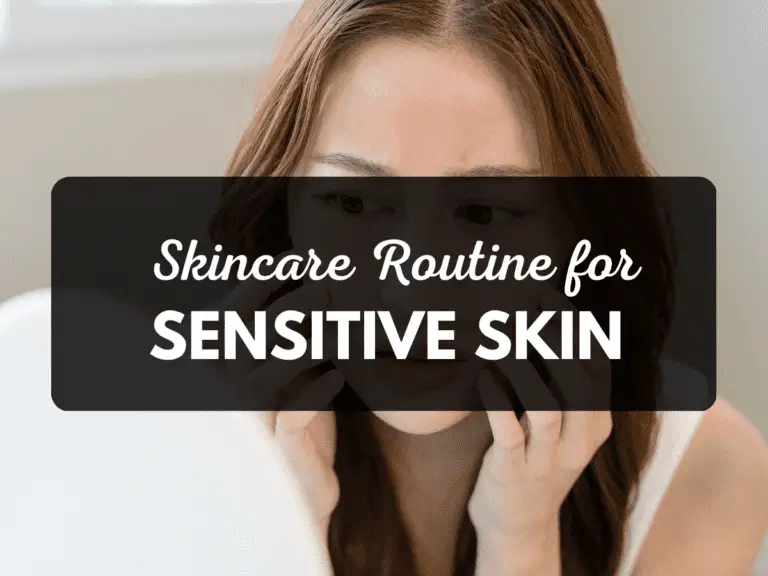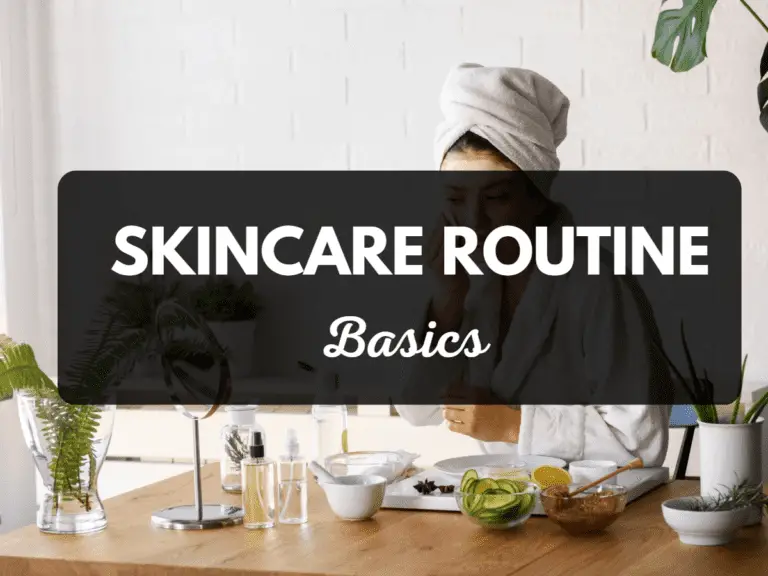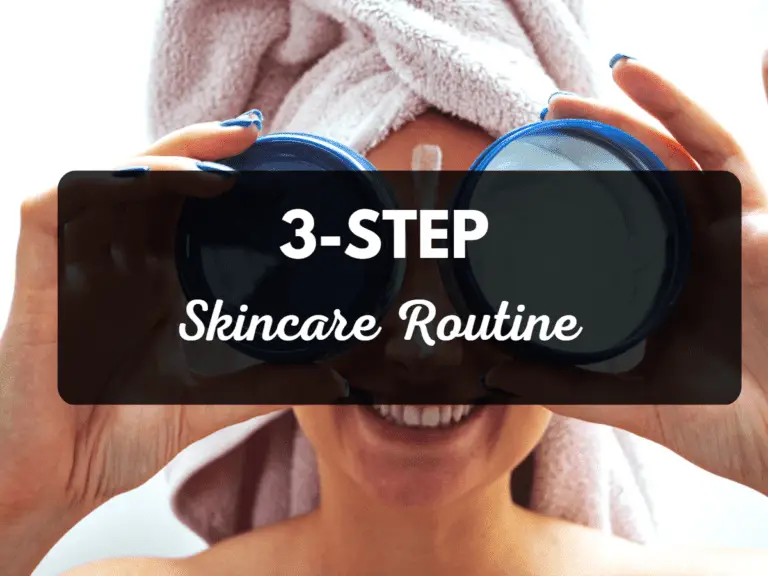Want flawless, glowing skin?
Building a perfect skincare routine is key!
From identifying your skin type to targeting specific concerns, we’ve got you covered.
Let’s dive right in
Tips to Build a Perfect Skincare Routine
1. Identify your skin type:
You probably spend much time and money trying to achieve the perfect complexion. But the truth is, building a perfect skincare routine is not rocket science. It starts with one simple step: identifying your skin type.
Why is this so important, you ask?
Well, knowing your skin type will help you choose the right products and avoid using ones that can cause irritation or breakouts.
Wash your face with a gentle cleanser/face wash and pat it dry.
After an hour or so, take a good look at your skin. Here are some questions to ask yourself:
There are five main skin types: oily, dry, combination, acne-prone, and sensitive.
To identify yours, ask yourself these questions:
- Does your skin feel tight and dry all the time?
- Does your skin look shiny and feel greasy by midday?
- Do you have both dry and oily areas on your face?
- Does your skin react to new products with redness or itchiness?
And if you have acne-prone skin, your skin will automatically let you know your skin type.
Based on your answers, you can determine your skin type.

You probably have dry skin if your skin feels rough, tight, and dry. You likely have oily skin if you have visible pores and an oily T-zone.
If your skin feels rough and bumpy, you might have combination skin.
And if you experience redness and sensitivity, you have sensitive skin.
Remember, your skin type can change with age, weather, hormones, and other factors. So, it’s essential to reassess your skin type every once in a while to adjust your skincare routine accordingly.
2. Look for skin-friendly ingredients and products:
Why is it necessary, you ask?
Because the ingredients in your skincare products can make a huge difference in skin health and appearance.
Some ingredients can be harsh and irritating, while others can nourish and benefit your skin.
That’s why knowing what ingredients to look for and what to avoid is essential.
Research or consult a dermatologist if you need clarification on a particular ingredient or product. Your skin deserves the best, and using skin-friendly ingredients and products can make a difference in achieving healthy, glowing skin.
3. Understand your skin concerns that need target treatment products:
Each of us has unique skin concerns, and addressing them with targeted treatment products is essential.
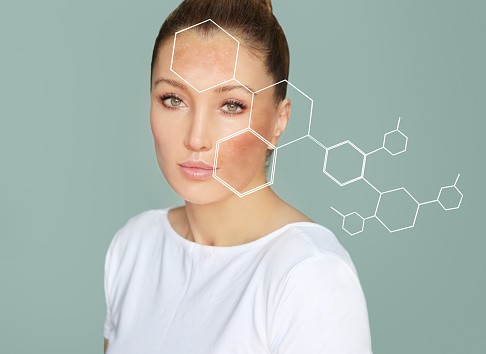
Here are some common skin concerns and the targeted treatment products that can help:
Acne: If you have acne-prone skin, look for skincare products that contain salicylic acid or benzoyl peroxide. These ingredients can help unclog pores, reduce inflammation, and prevent breakouts.
Dark spots and hyperpigmentation: To target dark spots and hyperpigmentation, look for products that contain ingredients like vitamin C, niacinamide, or hydroquinone. These ingredients can help brighten your skin and even out your skin tone.
Fine lines and wrinkles: To target fine lines and wrinkles, use products that contain retinoids or peptides. These ingredients can help stimulate collagen production and improve skin texture.
Dryness: To target dryness, look for products that contain hyaluronic acid, glycerine, or ceramides. These ingredients can help hydrate and moisturize your skin, leaving it soft and supple.
Dull, tired-looking skin: Look for products with vitamin C, alpha-hydroxy acids (AHAs), and niacinamide, which can help brighten skin tone.
Dark circles and puffiness: Look for products with caffeine, vitamin K, and peptides, which can reduce dark circles and puffiness around the eyes.
Sensitivity: If you have sensitive skin, look for fragrance-free products formulated for sensitive skin. Look for aloe vera or chamomile to help soothe and calm your skin.
4. Consider the formulation of the product:
Choosing the right skincare product isn’t just about the ingredients but also the formulation.
The formulation refers to combining the ingredients and the product’s texture.
The right formulation can make a huge difference in the effectiveness and suitability of a product for your skin.
- Texture: Consider the product’s texture and suitability for your skin type. For example, if you have oily skin, choose lightweight products like gels or serums, while those with dry skin might prefer richer creams.
- pH level: The pH level of a product can affect how it interacts with your skin. Generally, products with a pH level of around 5.5 are considered the most skin-friendly.
- The concentration of active ingredients: The concentration of active ingredients in a product can determine its effectiveness. Be sure to look for products with high concentrations of ingredients that target your specific skin concerns.
- Compatibility: Some ingredients in skincare products can interact with each other, making them less effective or even causing irritation. For example, using a product with vitamin C and niacinamide can cause flushing and irritation. So, it’s essential to check if the ingredients in your skincare products are compatible.
- Packaging: The packaging of a product can affect its stability and effectiveness. Look for products with air-tight, opaque packaging that prevents exposure to air and light.
Remember, what works for another person may not work for another. Experimenting with different formulations and products is essential to find what works best for your skin.
5. Set your skincare goals:
Setting goals for your skincare routine helps you stay motivated and focused on achieving your desired results.

Here are some tips for setting skincare goals:
- Identify your priorities: Think about what you want to achieve with your skincare routine. Do you want to reduce breakouts, improve hydration, or address fine lines and wrinkles? Make a list of your priorities and focus on those areas first.
- Be realistic: It’s essential to set realistic goals that you can achieve. Don’t expect overnight miracles or dramatic transformations. Skincare is a long-term commitment, and it takes time to see results.
- Break it down: Once you’ve identified your priorities, break them down into smaller, achievable goals. For example, to reduce breakouts, start using a targeted treatment product and monitor your progress.
- Measure your progress: Keep track of your progress and adjust your routine. Take before and after photos, and keep a skincare journal to track your progress.
- Stay committed: Skincare is not a one-time thing; it’s a lifestyle. Stay committed to your skincare routine, even if you don’t see immediate results. Consistency is key!
Remember, skincare is a journey, not a destination, so enjoy the process and celebrate your progress!
6. Stay patient with your skincare Routine:
Skincare is not a quick fix; it can take weeks or even months to see significant results. It’s essential to give your skin time to adjust to new products and to see how they work for you.
Tips to help you stay patient and committed to your skincare routine:
Give it time: It takes time for your skin to adjust to new products and several weeks to see significant results. Please don’t give up too soon, and stick with your routine for at least a month or two before evaluating whether it’s working for you.
Be consistent: Consistency is key for a perfect skincare routine. Ensure you use your products as directed and stick to your daily routine.
Please don’t overdo it: Using too many products or over-exfoliating can damage your skin and cause irritation. Stick to a simple routine, and don’t try to do too much too soon.
Don’t switch products too often: It’s tempting to try new products, but constantly switching products can irritate your skin and make it difficult to see results.
Listen to your skin: Your skin will tell you if something is not working for you. If you experience irritation or breakouts, it could be a sign that a product is not suitable for your skin type. Feel free to make adjustments to your routine if needed.

7. Stick to products that work for you:
Finding the right products that work for your skin type and concerns is important. Once you find those products, stick to them!
Here are some reasons why:
Consistency is key: Using the same products consistently can help you see results and achieve your skincare goals.
Avoid irritation: Constantly switching up products can irritate your skin and make it difficult to see results.
Save money: Skincare products can be expensive, and sticking to products that work for you can save money in the long run.
Simplify your routine: Using too many different products can be overwhelming and time-consuming. Sticking to the products that work for you can simplify your routine and make it more manageable.
Trust your skin: If a product works well for your skin, there’s no need to switch it up. Trust your skin and stick with what works.
Remember, it’s important to reassess your skincare routine periodically to ensure it’s still working for you. If you notice changes in your skin or concerns, switch up your products. But don’t make changes too frequently or impulsively.
8. Consider your budget too:
Skincare products can range from affordable options to high-end luxury brands. It’s essential to consider your budget when building a skincare routine.

Here’s how:
Prioritize essentials: Invest in essential products necessary for your skin type and concerns, such as a cleanser, moisturizer, and sunscreen. These products are typically more affordable and can significantly impact your skin’s health.
Look for affordable options: Affordable skincare options can be just as effective as their more expensive counterparts. Look for drugstore brands or affordable skincare lines that offer quality products at a lower price point.
Avoid trendy products: Skincare trends come and go, and trendy products can be expensive and may not benefit your skin. Stick to tried-and-true skincare staples that have been proven effective over time.
Shop sales and discounts: Keep an eye out for sales and discounts on skincare products. You can often find great deals on your favorite products.
Avoid too many products: You don’t need a ten-step skincare routine with all high-end products to achieve healthy skin. Please keep it simple and focus on the essentials.
Invest in multi-purpose products: Consider investing in multi-purpose products that can address multiple skincare concerns simultaneously. For example, a moisturizer with SPF can save you money and time in your skincare routine. And a moisturizer with active ingredients will keep your skincare routine simple.
9. Use high-quality products:
Using high-quality products can make a big difference in the health and appearance of your skin.
Tips to help you find affordable yet high-quality skincare products:
Look for trusted brands: Do your research and look for brands known for their quality skincare products. You don’t necessarily need to go for the most expensive products but keep the quality high.
Check the ingredients: Look for products that contain high-quality, skin-friendly ingredients like antioxidants, hyaluronic acid, and vitamins.
Read reviews: Look for reviews from others who have used the products you’re considering. It can give you a good idea of their effectiveness and quality.
10. Introduce new products slowly:
Here is how:
Patch test: Before applying a new product all over your face, patch test it on a small area of skin to make sure you don’t have a negative reaction.
Introduce one new product at a time: Start by incorporating one product into your routine and giving your skin time to adjust before introducing another.
Please wait a few weeks: Give your skin at least two weeks to adjust to a new product before deciding whether it works.
Watch for reactions: Look for negative reactions, such as redness, itching, or breakouts. If you notice any, stop using the product and consult a dermatologist.
Take note of any changes: Keep track of any changes in your skin’s texture, appearance, or sensitivity when introducing a new product. This will help you determine if it’s the right product for you.
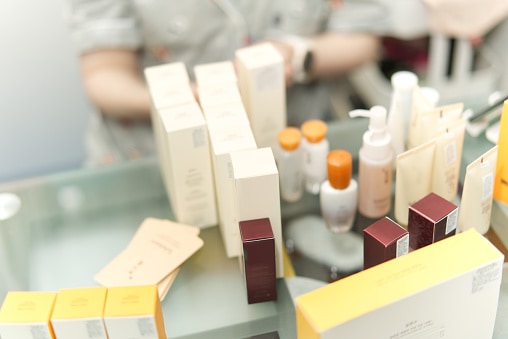
11. Change and Adjust your skincare routine according to skin conditions and seasons:
Your skincare routine should be adaptable to changes in your skin conditions and the seasons. For instance, if you’ve successfully treated a temporary skin issue like pimples, it’s unnecessary to continue using the same product. Your skin needs may change depending on the weather, so you may need to adjust your routine to accommodate these changes.
For example, you may need a lightweight moisturizer during summer to prevent excess oil production. In the winter, you may need to switch to a richer, more hydrating formula to combat dryness. Similarly, suppose you’re traveling to a different climate. Then, you may need to adjust your routine to accommodate the changes in temperature and humidity.
By being adaptable and adjusting your skincare routine as needed, you can help ensure that your skin stays healthy and glowing all year round.
12. Avoid DIY skincare products:
Are you a dermatologist? No?
Just because something is natural and affordable doesn’t mean it’s safe for your skin.
Mixing random ingredients together like some mad scientist is risky and a waste of time.
And let’s be honest, do you really want to risk looking like a science experiment gone wrong?
Besides, think of all the money you’ll save on not having to buy expensive skincare products to undo the damage you did to your poor face.
Trust me; your skin will definitely thank you for leaving the DIY experiments to the professionals.
13. Consider your lifestyle:
A skincare routine can only do magic, no matter how luxury products you use, once you have a healthy lifestyle.
Here is a list of questions for you to consider for your lifestyle:
- Do you have a regular exercise routine?
- How often do you eat healthy meals?
- Are you a smoker or someone who drinks alcohol regularly?
- Do you work long hours or have a lot of stress?
- How much time do you spend on leisure activities or hobbies?
- Do you engage in social activities regularly, such as spending time with family and friends?
14. Stay hydrated from the inside out:
Staying hydrated is necessary for good health, but did you know it’s not just about drinking plain water?
While staying hydrated with water is important, eating foods with water content can also help.
These foods not only help to keep you hydrated but can also provide vital nutrients and vitamins.
Fruits like watermelon, strawberries, and oranges are excellent sources of hydration as they contain more than 85% water by weight. Vegetables like cucumber, zucchini, and lettuce are also great options to add to your diet as they have a high-water content.
Additionally, soups made from broths or vegetables can be another way to stay hydrated while enjoying essential vitamins and minerals.
Incorporating these hydrating foods into your meals makes staying on top of hydration levels easier.
15. Get enough sleep:
Getting enough sleep is necessary for maintaining a healthy body and mind.
But do you know that it can also affect your skin?
A good night’s sleep is crucial for your skincare routine, as it can help to repair and rejuvenate your skin.
During sleep, the body goes into repair mode, producing collagen, which helps to keep the skin looking young and fresh.

Lack of sleep may lead to dark circles under the eyes, fine lines and wrinkles, dehydration, and dullness. In addition, when we’re tired, our skin produces more cortisol (the stress hormone), leading to breakouts.
So if you want healthy-looking skin with a natural glow, ensure you get enough shut-eye each night – aim for around 7-9 hours.
And remember to cleanse your face before bed too!
16. Avoid investing in unnecessary and harsh skincare tools:
In beauty and skincare, countless gadgets and tools promise to revolutionize your routine.
Investing in every new product that hits the market can be tempting, from jade rollers to high-tech cleansing devices.
However, before you break out your wallet, it’s worth considering whether these tools are necessary to achieve healthy, glowing skin.
One thing to remember is that many of these tools can be too harsh on your skin.
Aggressive exfoliation or overuse of cleansing brushes can strip away essential oils and damage the delicate barrier that protects your face from environmental stressors.
It can lead to irritation, dryness, and even premature aging.
Another factor to consider is whether a particular tool fits your skincare routine.
If you already have a simple but effective regimen, adding more steps or products may do more harm than good.
17: Seek professional advice:
Figuring out what works best for your skin type can be challenging.
While plenty of skincare products on the market promise miraculous results, it’s important to remember that not all products are created equally.
Suppose you have serious skin concerns or super sensitive skin.
In that case, seeking professional advice from a dermatologist or esthetician may be the best way to build a perfect skincare routine that works for you.
Professional advice can help you determine your skin type and identify any underlying issues affecting your complexion.
A dermatologist or esthetician can recommend specific products and treatments tailored to your unique needs and provide guidance on how to use them effectively.
They can also offer tips on lifestyle changes like diet and exercise that can support healthy skin.
Key Takeaway
Having a perfect skincare routine doesn’t have to be complicated or expensive. If you’re new to skincare, start small and work up from there. Your skin will thank you!

